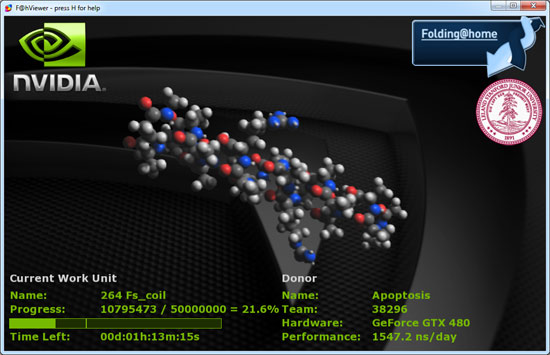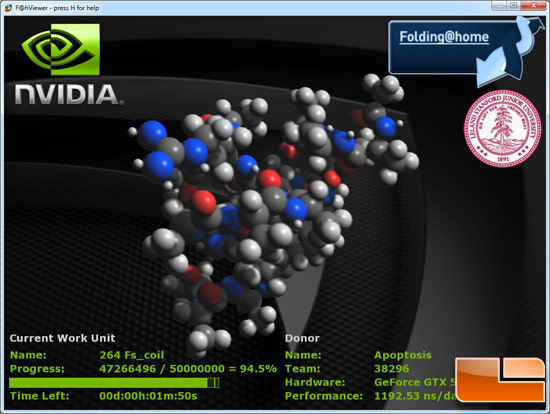NVIDIA GeForce GTX 580 GF110 Fermi Video Card Review
GeForce GTX580 F@H Performance

For those new to F@H, Folding@home is a distributed computing project that, very simply stated, studies protein folding and misfolding. In the last few years Folding@home on graphics cards has gained popularity as it offers great performance per watt. By utilizing the power of the GPU, Stanford has been able to leverage ever evolving graphics technology and put it to good use trying to understand and possibly solve the problem of proteins misfolding. Since the release of the NVIDIA GPU client, their graphics cards have consistently been at the top of points per day, meaning the highest production video card. NVIDIA has been touting Fermi as THE next big thing for GPGPU and projects like Folding@home. Many have been giddy with anticipation since Nvidia first broke the news of Fermi way back on September 30th of 2009.

We ran the Windows GPU2 client on the GeForce GTX 480 and the GTX 580 to see how the cards performed.
| GeForce GTX 480 | GeForce GTX 580 | GeForce GTX 580 OC | |
| Work Unit Name | 264 Fs-coil | 264 Fs-coil | 264 Fs-coil |
| Seconds per step | 55 | 48 | 43 |
| GPU Idle Temp | 51C | 36C | 36C |
| GPU Folding Temp | 80C | 69C | 71C |
| System Load | 254W | 243W | 247W |
| Noise Level | 62dB | 59dB | 59dB |
For our test we ran the 264 Fs_coil work unit on all of the pairs of cards and found that the GeForce GTX 580 was 12.7% faster per step than a GeForce GTX 480. When we overclocked the shaders of the card up to 1740MHz we were able to improve performance and the seconds per step dropped by five seconds! With this nice overclock on the 512 shaders we were able to get a 22% F@H performance improvement over a GeForce GTX 480 reference design! As you can see, the GeForce GTX 580 is faster, quieter and uses less power than a GeForce GTX 480.

Comments are closed.